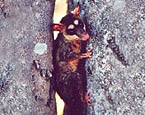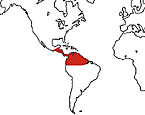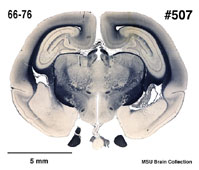|
Gray
Four-eyed Opossum
(Philander opossum) #66-76 |
||||
|
|
Physical
characteristics and distribution
|
|
Gray
Four-eyed Opossum Philander opossum |
|
Description
of the brain
|
|
The brain weight is 4.3311 g (includes R.& L. Trg.). The brain meaurements are: Length AP left 18.1 mm; Length AP right 19.3 mm; Bitemporal width 18.8 mm; Temporal height left 8.8 mm; Temporal height right 9.8 mm. |
|
Animal
source and preparation
|
|
All
specimens collected followed the same preparation
and histological procedure.
|
Other Related Resources (websites and publications)
List of Specimens | Explore Collections | Brain Sections | Brain Evolution | Brain Development | Brain Circuitry | Brain Functions | Location and Use | Related Web Sites | Contact Us | Search MSU Database | Personnel | Home



